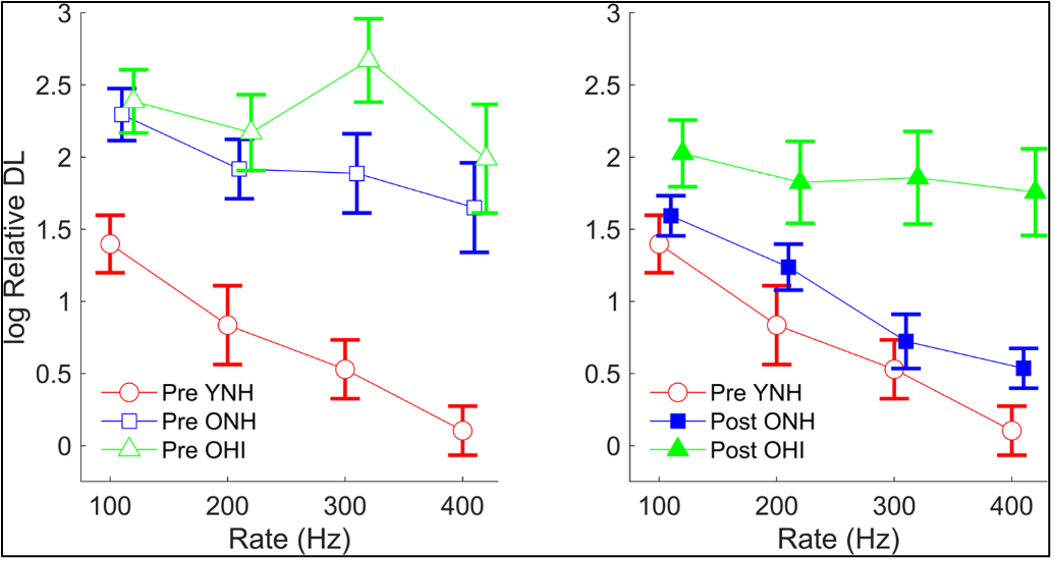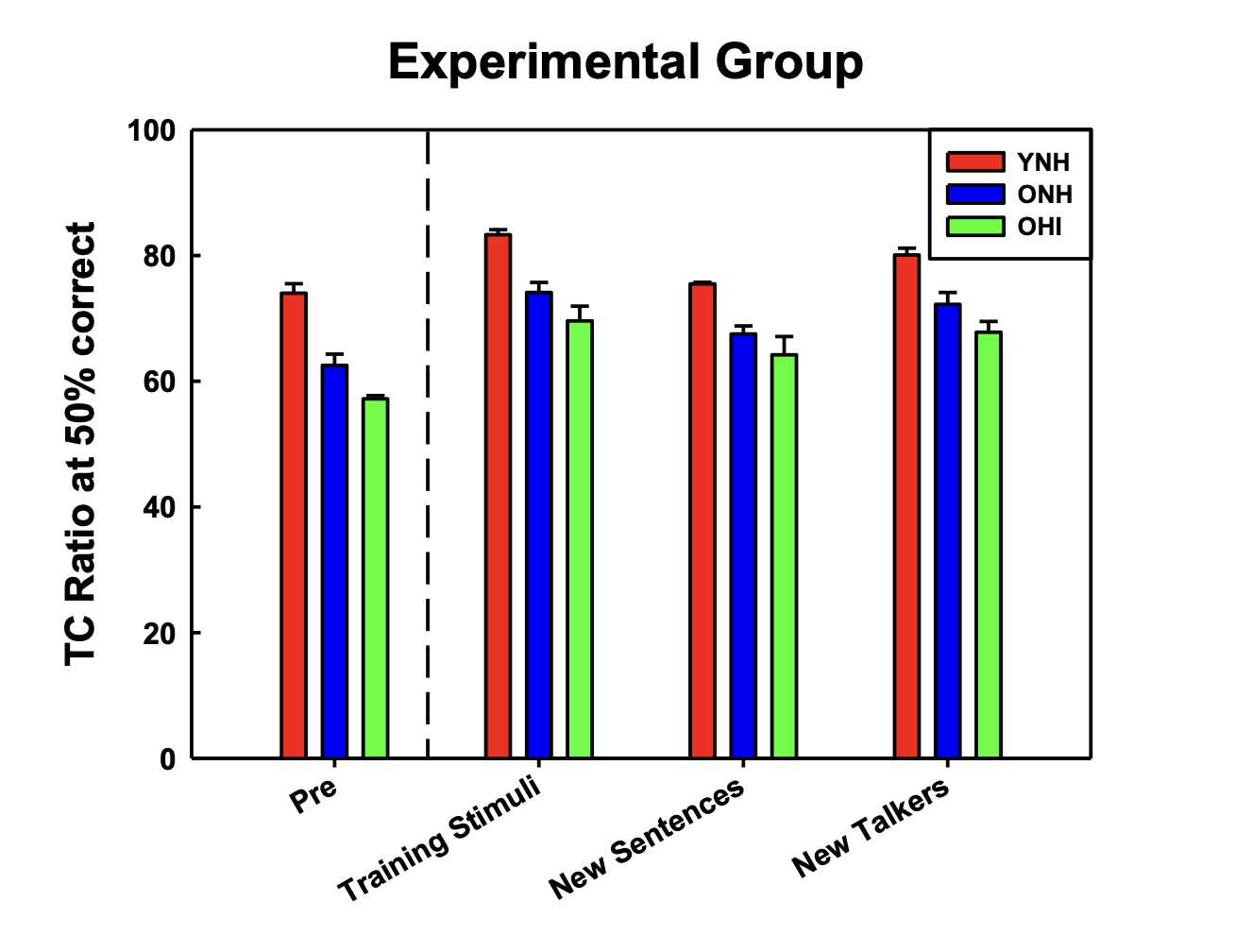Our study of temporal rate discrimination training has shown large age-related differences in the ability to discriminate the pulse trains prior to training (see figure, left panel). However, significant improvements were shown by the listeners in perceiving very brief timing differences in the rapid pulse trains following training compared to pre-training, indicating that listeners improve their temporal processing ability. These improvements are observed on the behavioral measures that were trained, as well as on similar behavioral measures using untrained stimuli. Both younger and older normal-hearing groups showed significant benefit of training. Importantly, the older normal-hearing listeners’ performance after training was not significantly different from that of younger normal-hearing listeners prior to training (see figure, right panel). Participants in the control groups did not show significant training benefit on the pulse-rate discrimination task.

The training study with rapid speech is ongoing. Nonetheless, preliminary results are promising, with listeners in the experimental group showing improved perception of rapid speech following training for the sentences used in training, as well as generalization to new sentences and new talkers. This level of benefit is not seen for the listeners in active control graining.



